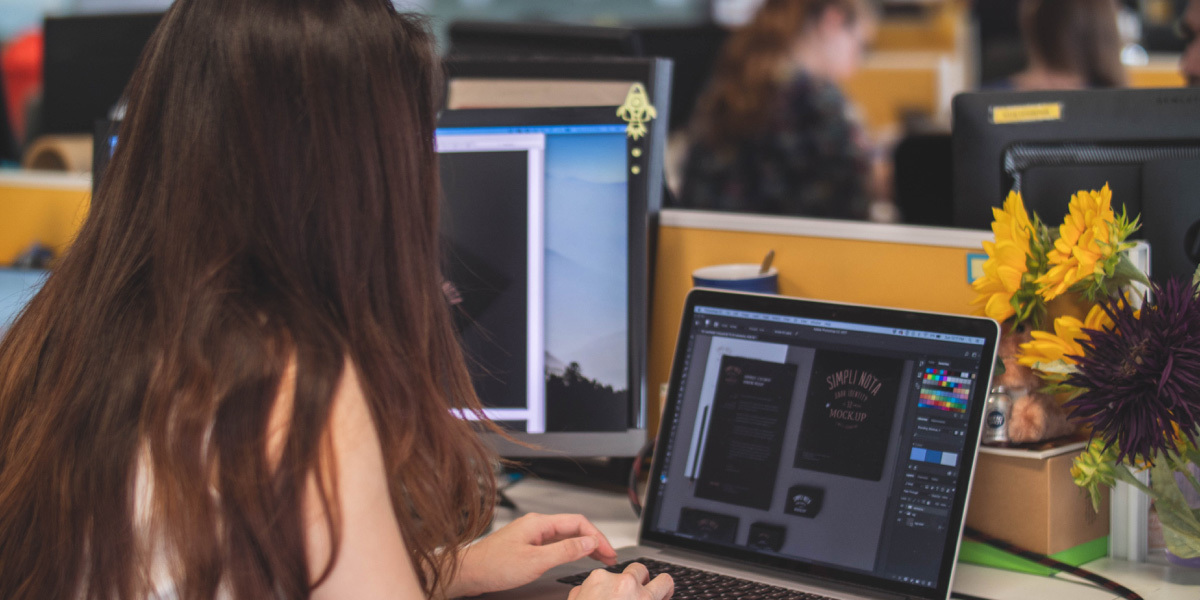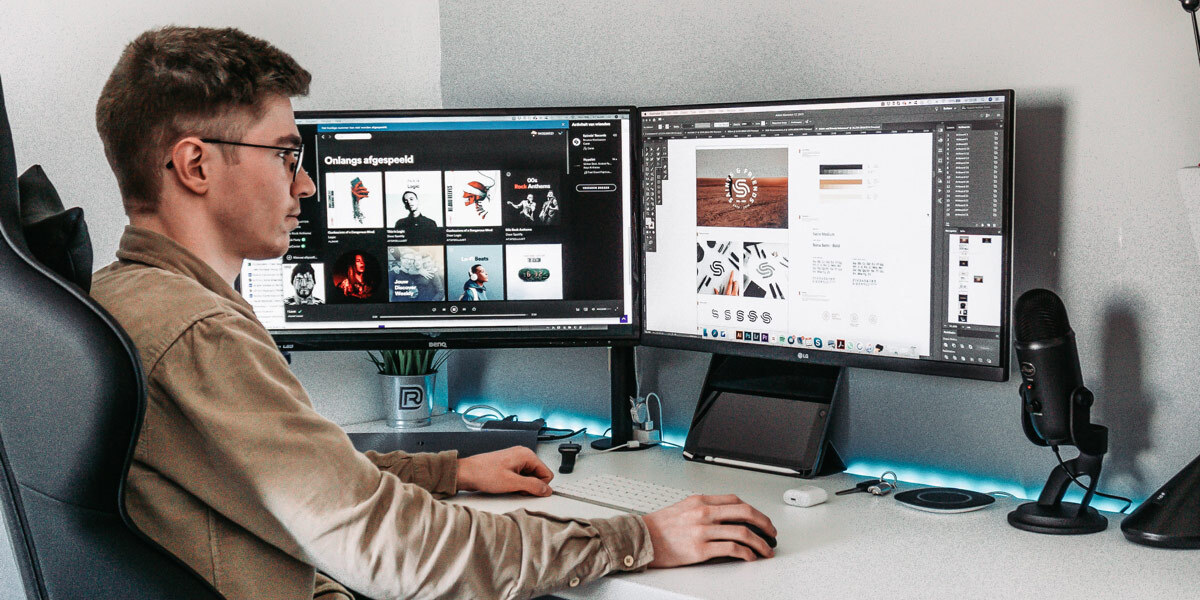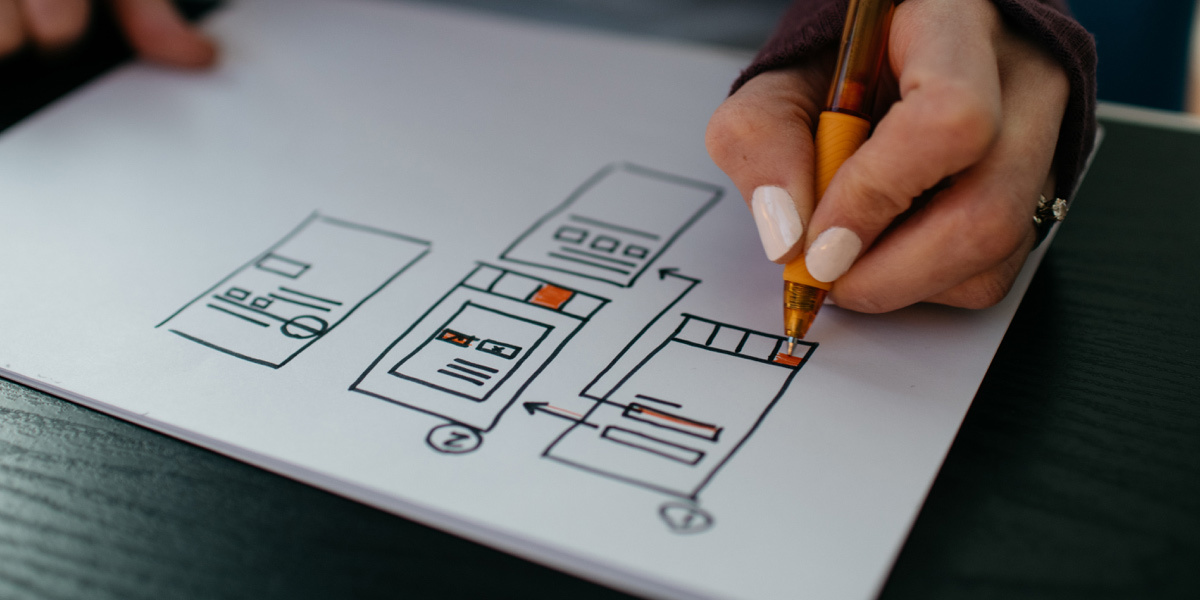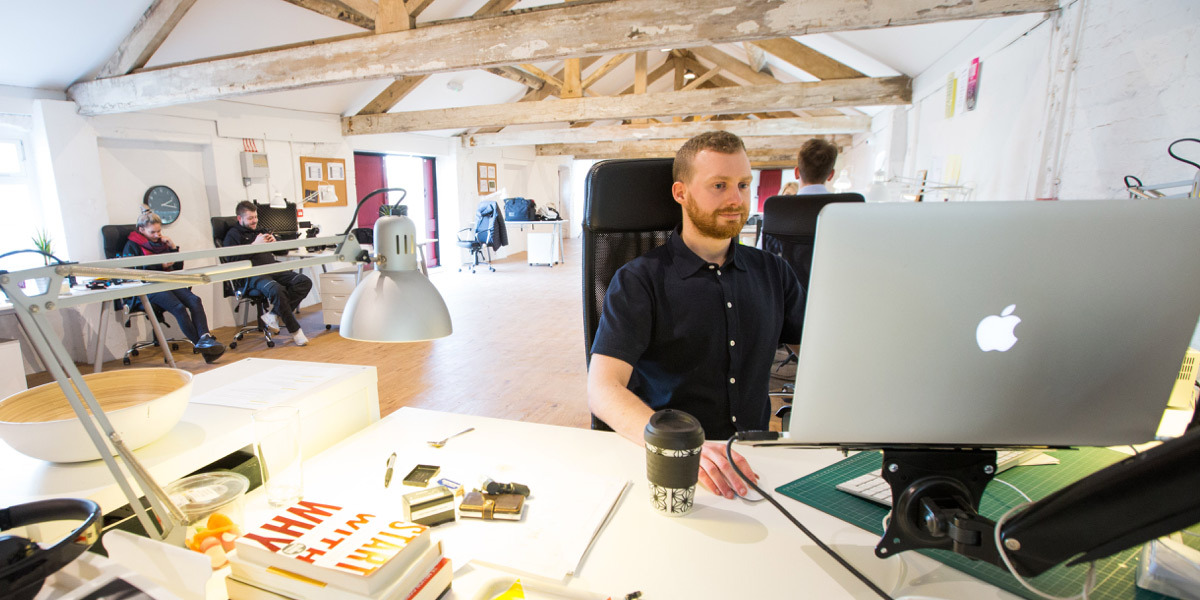It’s well-known that when someone introduces themself as a designer, they could mean a multitude of things. With ‘designer’ becoming an ever more popular career path, it’s easy to get confused by all the job titles that fall under the design umbrella and how they differ from each other. Digital design is no exception, and if you’re considering a career in tech, you’ve probably come across this term a fair amount. So what does digital design actually entail?
In this blog post, we’ll guide you through the all-encompassing field of digital design, touching on what it involves, who is considered a digital designer, and how you can break into it.
Here’s what we’ll cover:
- What is digital design?
- What’s the difference between digital design and graphic design?
- What kind of digital designers are there?
- How do I become a digital designer?
- How much could I earn as a digital designer?
Let’s get right to it!
1. What is digital design?
When you hear ‘digital design,’ what comes to your mind? Is it web design? Maybe UX or UI design? Perhaps even graphic design, or something more specific like illustration or animation?
The answer is all of the above.
Digital design is an umbrella term that encompasses several different roles and disciplines. It’s the process of mapping out the look and feel of the content that people view and interact with on a digital interface. Digital designers do more than design graphics; it’s all about creating designs crafted for specific devices, taking into account factors like user experience, interactivity, and overall aesthetic balance.
Each of the roles that fall within the sphere of digital design involves the core practice of designing what people see on a screen, but the most common digital design roles have a more interactive element to their work. With the face of technology rapidly evolving, digital designers have to continually update their skillsets to ensure the content they design can meet the changing needs of their users.

2. What’s the difference between digital design and graphic design?
Digital design and graphic design are often used interchangeably, but there are some key differences between the two vocations. The most distinguishing factor is the mediums that the two roles work with. Graphic designers work with both digital and print media, and produce graphics for various channels such as e-mail marketing or video banners. In contrast, digital designers work exclusively with digital content.
A more in-depth description is that graphic designers often focus on specific graphics, such as infographics, logos, merchandise, brochures, advertising, and other ‘static’ visual assets. Digital designers, on the other hand, are known for building entire digital experiences with a focus on interactivity—employing more in-depth techniques like wireframing, user testing, and storytelling.
Despite these differences, the two roles have largely overlapping skillsets. Most digital designers should be able to carry out the tasks of a graphic designer, and a lot of graphic designers consider themselves digital designers. Both roles are expected to have a mastery of the industry-standard tools used to create digital assets—such as Sketch or Figma, and have a basis in fundamental design practices like color theory or typography. Graphic design to digital design is a well-trodden career path, and one that’s worth considering as more experiences and products become digitized.

3. What kind of digital designers are there?
Let’s take a look at some of the prominent roles that fall within the realm of digital design.
Web designers
Web designers specialize in the visual design and layout of a website or app—including landing pages, PDFs, or any other standalone page. This can include some interactive elements, but web designers will usually create a static mockup file for the developers rather than an interactive prototype.
UX designers
UX (user experience) designers focus specifically on the functionality and usability of a digital product. During the product design process, UX designers advocate for the user at every stage—conducting regular user testing to ensure they’re designing a product that’s both accessible and enjoyable for the user to interact with. Their deliverables include wireframes, prototypes, and user flows.
UI designers
UI (user interface) designers are concerned with the look and feel of a digital product, focusing on an interface’s visual elements. They often work closely with the UX designer, building on the foundations they’ve laid to bring the digital interface to life with color, typography, and shapes. To ensure consistency across the product, they also often create visual style guides and UI pattern libraries.
Product designers
Product designers have very similar tasks to UX designers. However, product designers go beyond user experience and focus more on the business and brand, reflecting on how the digital product should work, what it will cost, and the broader scope of the product within the company’s context. Product designers are often expected to answer the questions that the UX designer will come up with during the user testing phase.
Interaction designers
Interaction designers focus on the points of interaction between the users and the product—and the effect of those interactions. Interaction design aims to create products that enable the user to achieve their objectives in the best way possible. Interaction designers often use things like sound or animation to enhance the digital experience.
It’s also worth noting that digital designer is a role commonly listed on job boards. Depending on the nature of the company, a digital design role will usually involve any combination of the tasks and responsibilities mentioned above.

4. How do I become a digital designer?
Digital designers are in high demand, and as we’ve seen, there are a number of roads you can go down. It all depends on what excites you, and what your transferable skills are. Do you consider yourself a visual person who prefers working with color and typography? Do you enjoy talking to clients, stakeholders, and users about their needs? Start by researching more into these roles and getting a sense of which career path could see you build on your current strengths.
Think about the romance languages, like Spanish, Italian, and Portuguese. They all share a similar grammatical structure, and a lot of the same words. Once you learn one, you won’t have trouble understanding the others. Digital design is the same. All of the vocations mentioned above share the same fundamental principles, and once you learn these core practices and tools, you’ll start seeing how they function across roles.
To give you an idea of what you need to learn, the basic digital design skills and tools include:
- Color Theory
- Typography
- Wireframing
- Prototyping
- User testing
- Responsive design
- Tools like Sketch, Invision, and Figma
Luckily, the internet is inundated with short courses, blog posts, and tutorials that will give you a core understanding of these tools and techniques. To immerse yourself in the field, start by incorporating things like reading a blog post or watching a YouTube tutorial into your daily routine.
If you’re a complete beginner looking to get into digital design, you might want to look into enrolling in a bootcamp course specifically created for beginners. On a good quality bootcamp course, you’ll learn all the theories and practices mentioned above—as well as the soft skills, tools, and job-searching strategies that will see you land a role as a digital designer. Many courses also pair you up with a mentor, tutor, and career specialist to support you along your journey—right through to finding a job and marketing your new skills.
When it comes to choosing the right bootcamp for you, it’s easy to feel overwhelmed by choice. In our complete guide to UX design bootcamps, we break down the different kinds of bootcamp courses out there—and what you can expect from them.

5. How much could I earn as a digital designer?
If you’re considering studying for a career in digital design, naturally, you’ll want to ensure you’ll get a return on your investment. The salary you earn as a digital designer depends on a range of factors, including where you are, your specific job title, and your level of seniority (junior, mid-level, etc.).
Based on information from Payscale and Glassdoor, the average salary for digital designers in the United States is $54,577. Depending on your seniority levels, you could earn as much as $258,000 per year. Based on the same sources, the average salary for UI and UX designers, respectively, is $76,115 and $85,000.
Again, this is just a snapshot of average salaries. To find out more about digital design salaries in your local area, check out our complete global salary guides in both UI design and UX design. We update these salary guides regularly to ensure you’re getting the latest salary information.

Final thoughts
Digital design may be an elusive, multifaceted field—but with so much innovation happening within tech, it’s hard to imagine why you would design for any other medium. Whichever field you decide to specialize in, one thing’s for sure: digital designers are in high demand—and there’s never been a better time to add some digital design techniques to your skillset.
To find out more about a career in digital design, take a look at these articles over on the blog:
